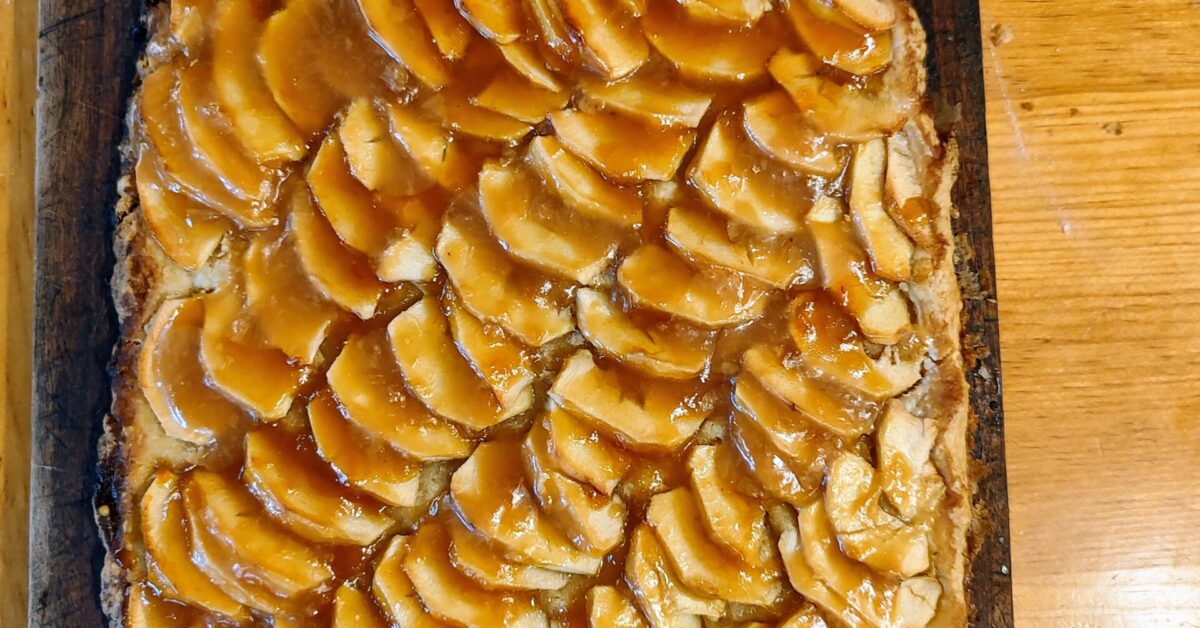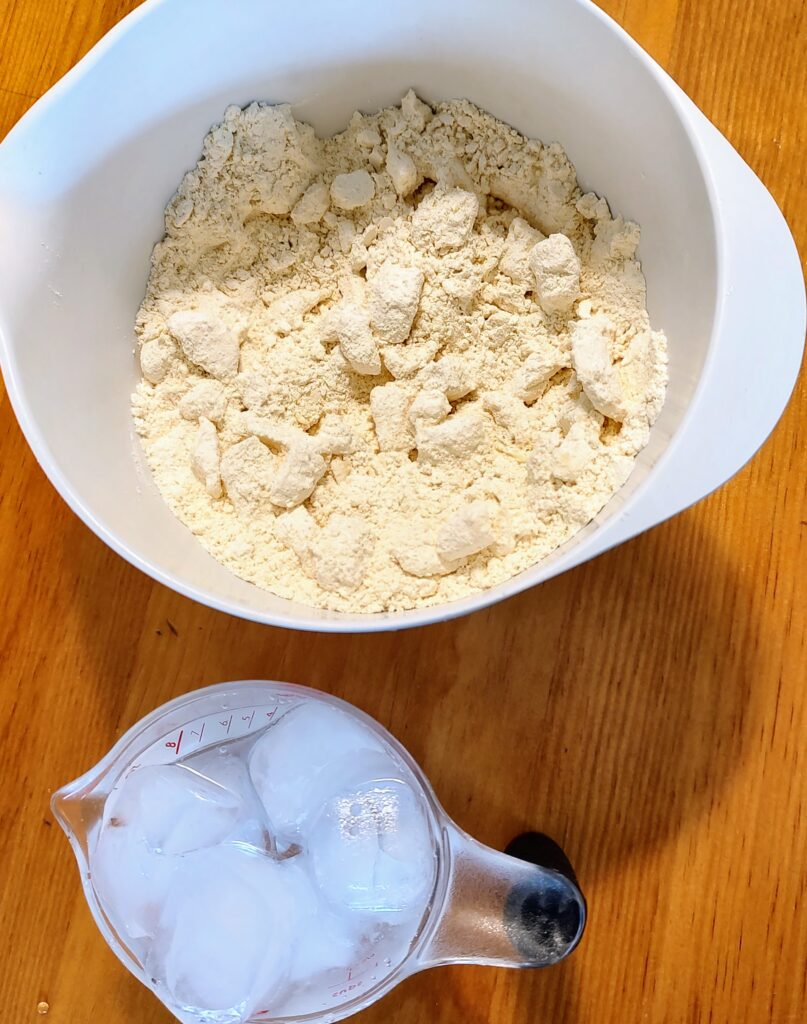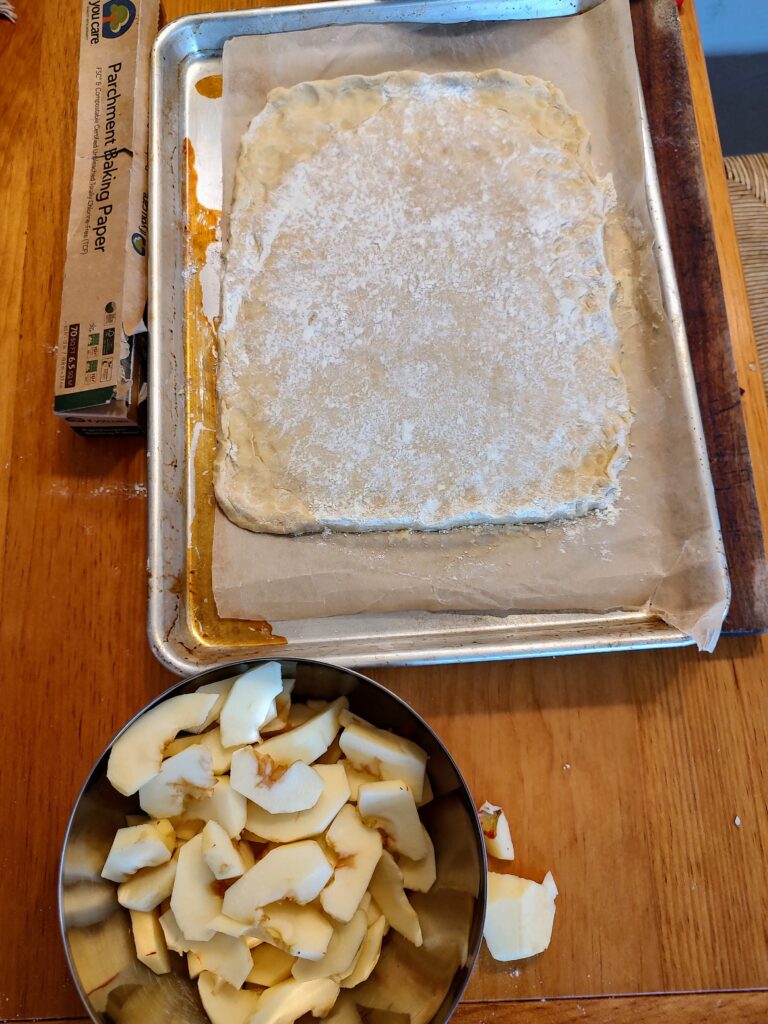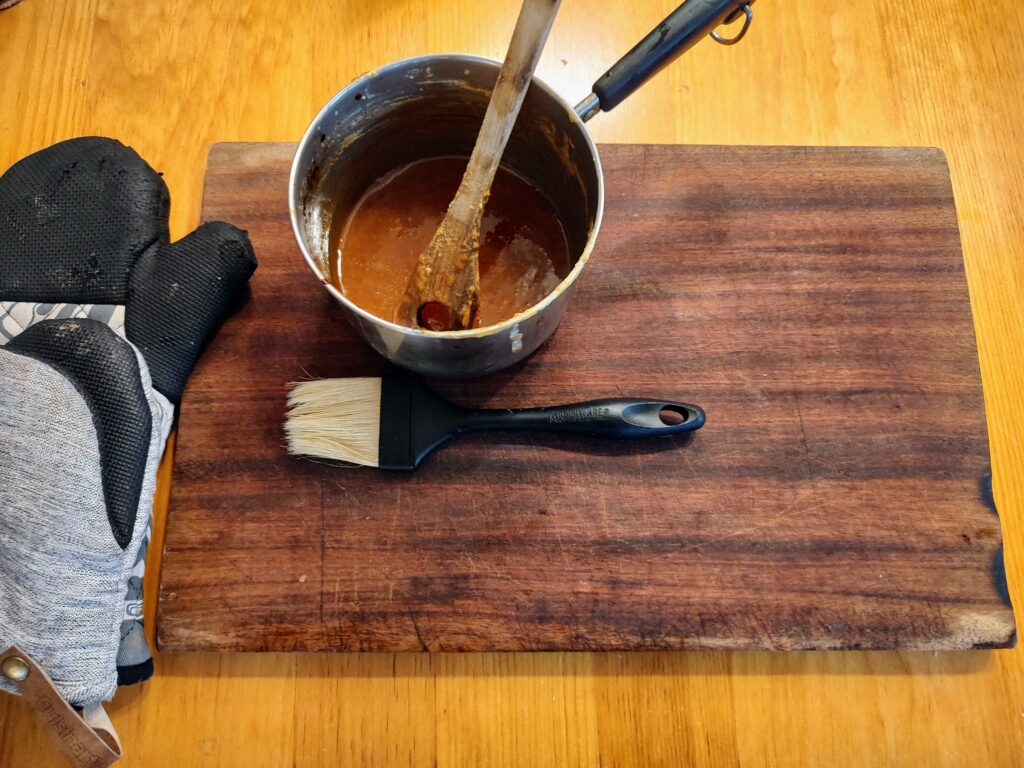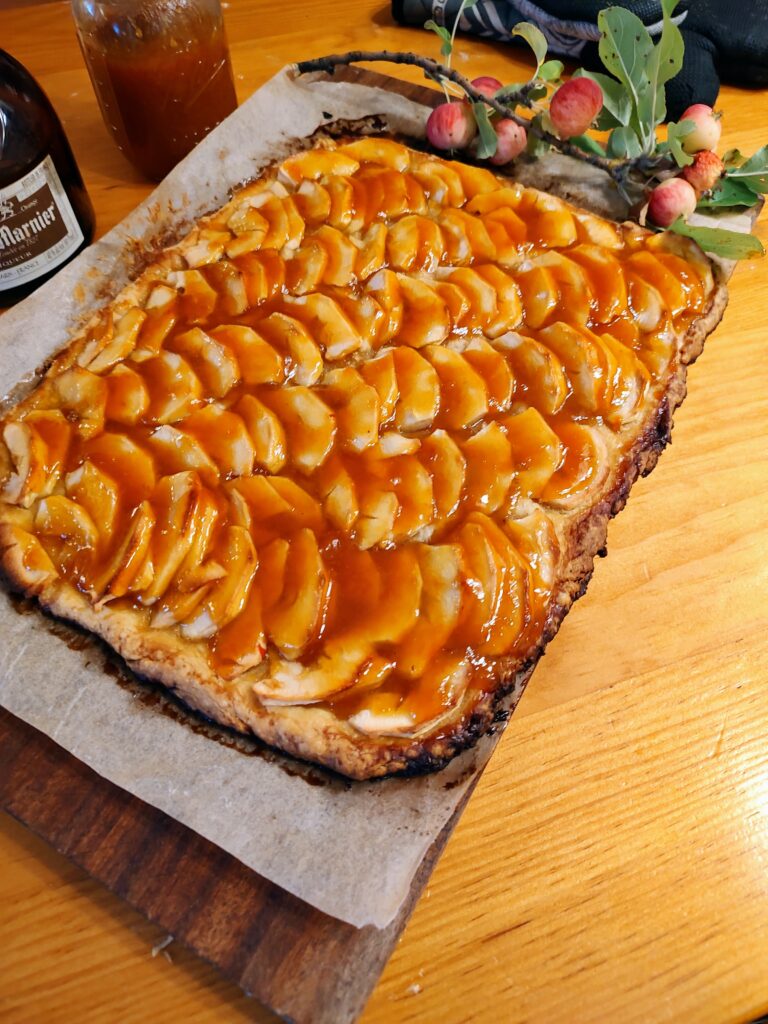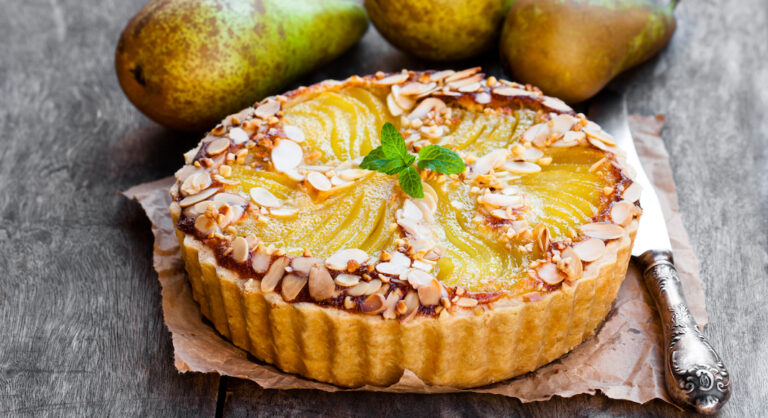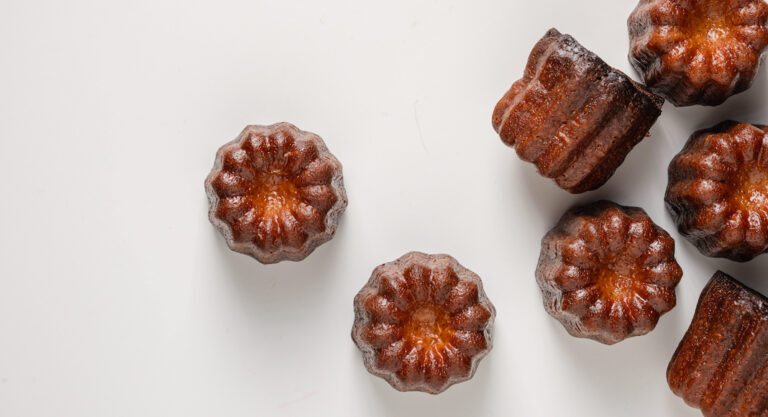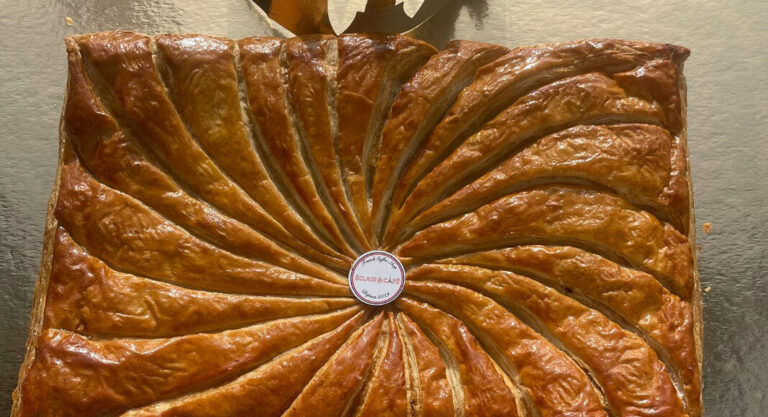There’s something deeply alluring about foods from the south of France. Recipes from the Midi tend to call for basic, elemental, easy-to-procure ingredients, but they’re elevated into unpretentious sophistication through a sublime juxtaposition of textures and flavors, aesthetic but unfussy techniques, and loving attention to detail. Provençal food is often rustic, farm-kitchen fare, but it’s also quintessentially French, food you can present with a flourish: Voilà!
Every southern French dish seems to have its magic, its alchemical secret or surprise: think of a tian, bright vegetables coiled like nested jewels, rich with cheese; or a clafoutis, that cake-custard amalgam holding tender ripe fruit suspended; or pissaladière, salty little anchovies and with sweet caramelized onions, spiked with thyme, baked hot and fast on a pizza crust.
Or take the Provençal apple tart, a buttery, crisp crust with sliced apples and sugar, nothing simpler, and if you wanted to, you could leave it there: roll out your crust, arrange apple slices on top, dust with sugar, and bake.
But of course, this classic recipe tucks two artful little tricks up the cook’s sleeve: the apples are scalloped in rows on the diagonal to give the most simple tart a bakery-quality elegance. And when it comes out of the oven, the apples are painted, shellacked really, with an apricot jam-and-booze glaze that makes the whole thing sparkle and glow richly, like amber in sunlight.
Here in Taos, New Mexico, apricot season is over, and anyone who wanted to preserve this year’s bounty for winter has already packed them in Mason jars. Now, the crabapple trees that grow all around our little adobe house are bursting with clusters of ripe red fruit. Curious to see what they tasted like, I picked one the other day and took a bite, expecting dry bitterness. Instead, what I got was a juicy, sweet-tart little apple, delicious to the core.
In possession of a few jars of the apricots our next-door neighbor put up for winter, I decided to make a Provençal apple tart. But not with our crabapples, which are too small. Instead, I bought a bag of larger Gala apples, sweet-tart and juicy, as well as firm enough to stand up to baking. This felt in tune with the spirit of Provençal cooking, which makes use of whatever’s abundant during any given time of year.
I made this tart on a warm, overcast afternoon, windows open, rain coming, dogs wandering in and out of the kitchen to see what all the hubbub was about. I paid them no attention: this is a surprisingly physical recipe. Peeling and slicing the apples was an exercise in manual finesse: not my strong suit, and my apples came out a bit angular and irregular. But no matter.
Rolling out the stiff chilled dough gave my upper arm muscles a good workout. Setting the slices of apple into the dough demanded dexterous patience, and I was glad when I’d filled the entire large rectangle as neatly as I could. Once the tart was in the oven, then came my reward: stirring Grand Marnier with apricot jam, letting the concoction bubble into a fumy, shiny glaze.
The tart emerged, buttery crust browned at the edges, the apples slightly shrunken, their juices caramelized with the sugar. I painted them with glaze, vicariously channeling the pride of a farm wife in Aix-en-Provence, making this humble tart shine.
I cut it into generous pieces and served it warm. The crust shattered into crisp buttery flakes. The glaze overlaid the clean, autumnal flavor of apple with rich, boozy apricot, a hit of late summer in this time of seasonal change.
Provençal Apple Tart
(adapted from Ina Garten)
Crust:
2 cups flour
1 T. sugar
Pinch of salt
12 T. butter, ice-cold and cut into tiny pieces
½ cup ice water
Topping:
5 medium tart-sweet apples (Granny Smiths are too tart and dry for this)
½ cup sugar
4 T chilled butter
3/4 cup apricot jam
2-3 T cognac, brandy, Grand Marnier, or triple sec
Make the crust:
Whisk together flour, sugar, and salt. Cut butter into the flour mixture, then mix into the flour with a pastry cutter or your hands. Using a fork to mix, add the ice water slowly. You should have a cohesive ball of dough: on a floured board, knead quickly, then wrap in plastic or parchment paper and refrigerate for half an hour.
Prepare the apples:
While the crust chills, peel and and core and quarter the apples, then slice into uniform wedges, 1/8 to ¼ inch thick.
Preheat the oven to 400 degrees F.
Spread a piece of parchment paper on a sheet pan. On a well-floured board, roll the chilled dough into a rectangle, about 10 inches by 14 inches. Transfer to the parchment paper.
On the dough, arrange a row of apple slices diagonally, lengthwise, from one corner to the opposite corner. Continue on either side of this row with more diagonal rows, filling the entire crust and tucking smaller pieces in to fill gaps.
Dust the tart with the sugar and dot with the chilled butter. Bake for 45 minutes.
Prepare the glaze:
When the tart is almost ready to come out of the oven, press the apricot jam through a sieve to remove lumps and make it smooth. In a small saucepan, combine jam and liquor and stir well with a wooden spoon. Simmer over a medium flame for a couple of minutes to let most of the alcohol burn off.
When the tart comes out, paint the apples with a pastry brush until the whole tart is glazed. Try not to glaze the crust.
Serve warm, by itself or with crème fraiche or vanilla ice cream.

All photos are courtesy of the author.

